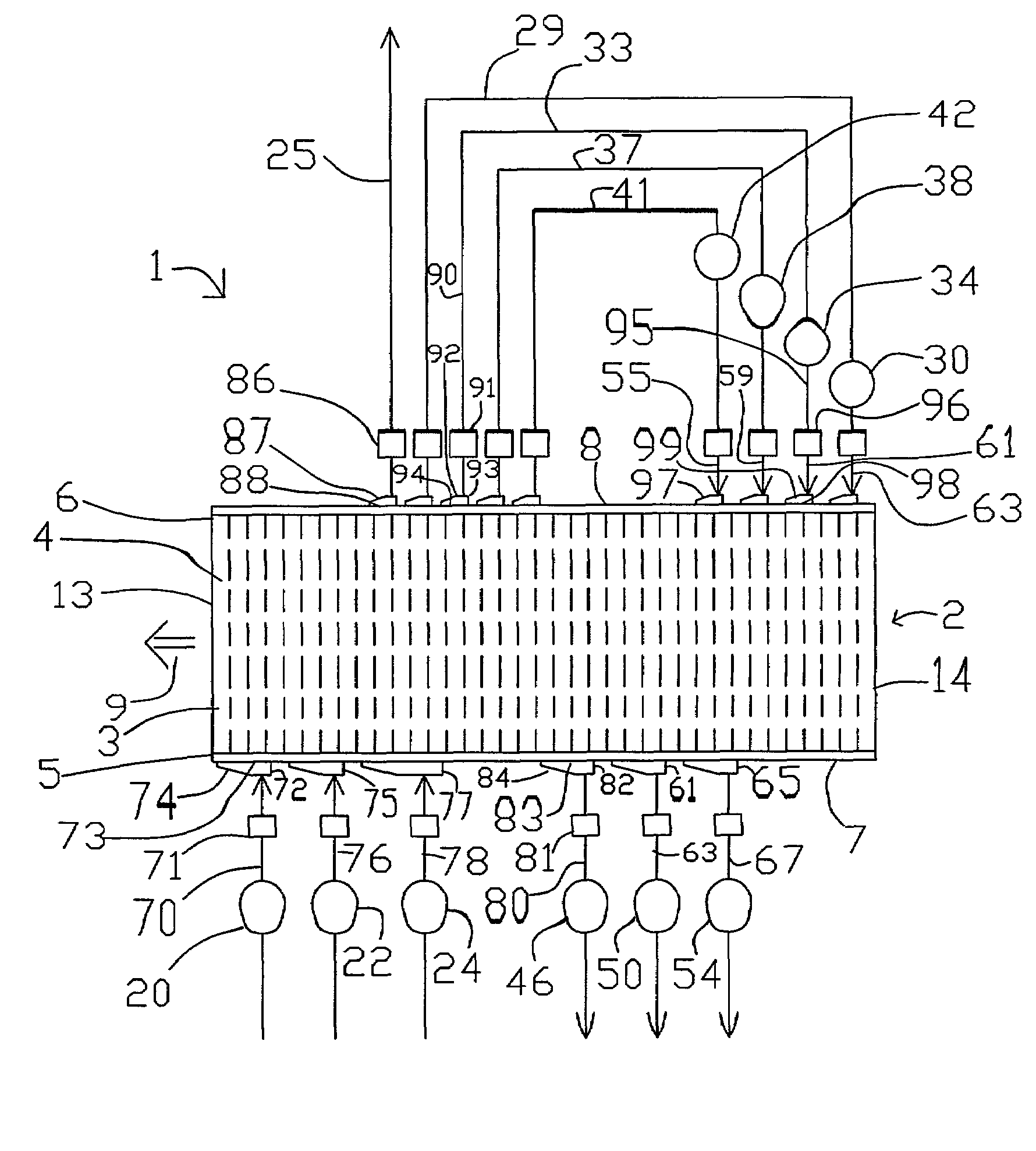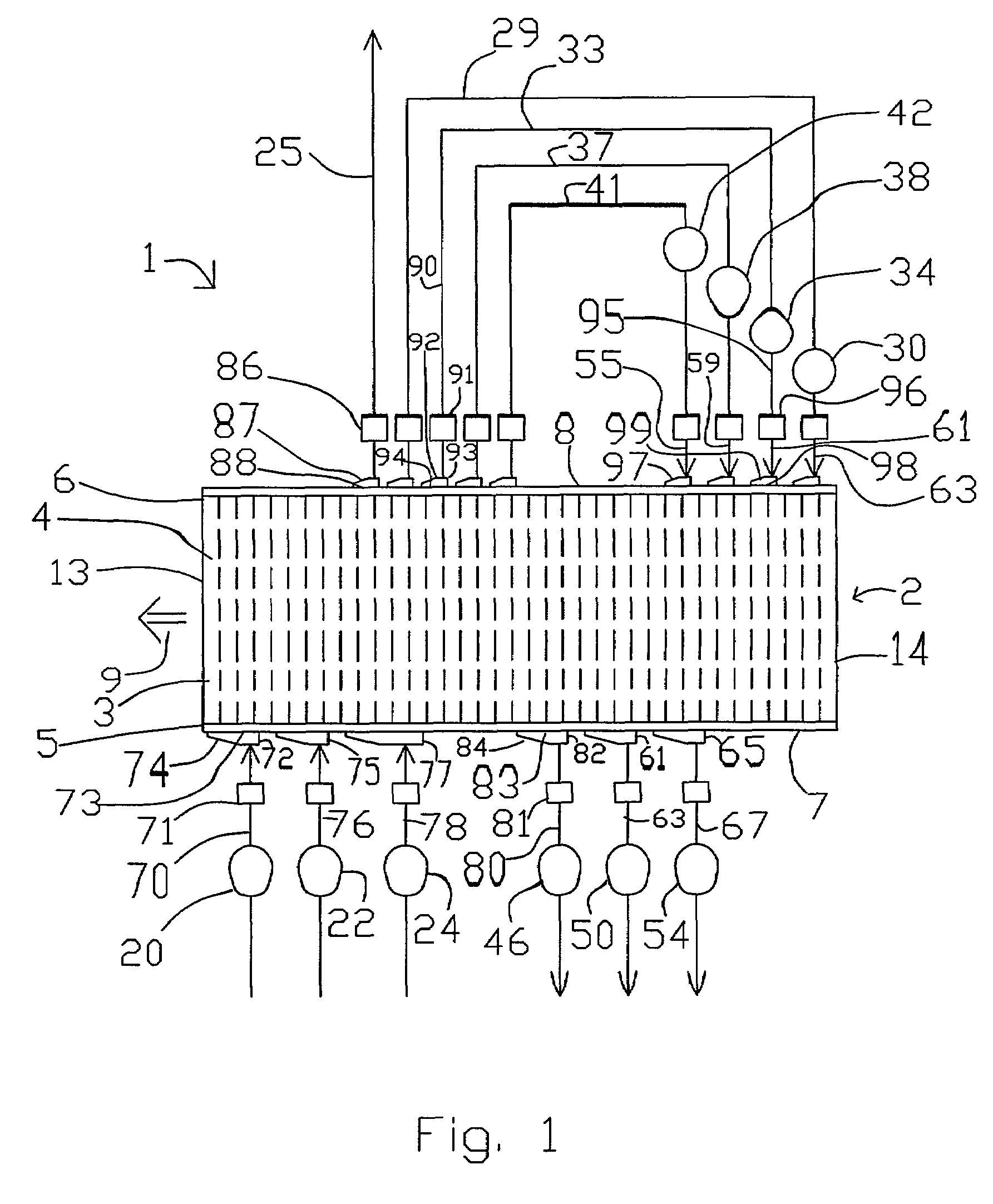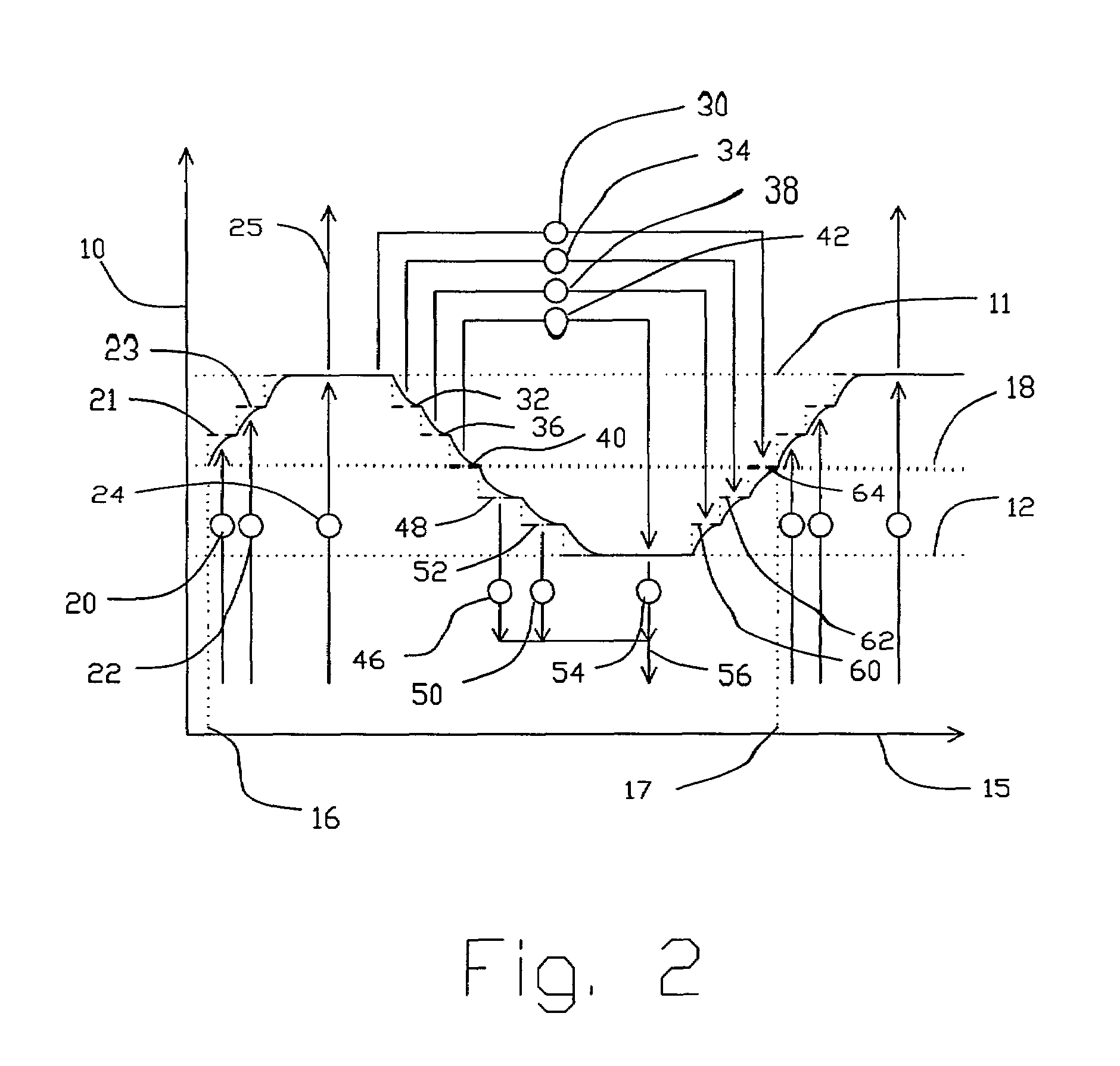Chemical reactor with pressure swing adsorption
a pressure swing adsorption and chemical reactor technology, applied in the field of chemical reactions, can solve the problems of incompatibility of prior art separation process and reaction operating temperature, inability to meet the operating temperature of the reaction itself, and inability to convert the feed reactant single pass, etc., to achieve the effect of reducing the flow and pressure pulsation seen by the compression machinery
- Summary
- Abstract
- Description
- Claims
- Application Information
AI Technical Summary
Benefits of technology
Problems solved by technology
Method used
Image
Examples
embodiment 200
[0052]Section 200A shows the first valve face of embodiment 200 of FIG. 4, at section 202–203, with fluid connections to feed and to countercurrent blowdown. Arrow 270 indicates the direction of rotation by adsorber rotor 2. The open area of valve face 107 ported to the feed and exhaust compartments is indicated by clear angular segments 77, 82, 61, 65, 72, 75, and 77 corresponding to those functional compartments, between circumferential seals 215 and 216. The substantially closed area of valve face 107 between functional compartments is indicated by cross-hatched sectors 275; and 276 which are clearance slippers 130. Typical closed sector 275 provides a transition for an adsorber, between being open between two adjacent compartments. Gradual opening is provided by a tapering clearance channel between the slipper and the sealing face, so as to achieve gentle pressure equalization of an adsorber being opened to a new compartment. Much wider closed sectors (e.g. 276) are provided to ...
embodiment 500
[0072]Embodiment 500 is an apparatus for conducting an endothermic reaction, with the chemical reaction performed in reactors external to the rotary module. The PSA cycle pattern is shown in the lower part of FIG. 8. An example application is ammonia dissociation to generate reducing gas as hydrogen.
[0073]Reactors 501, 502 and 503 are interposed in conduits 78, 76 and 70 supplying gas to the first valve face 7. If desired, only one reactor (e.g. 501) could be provided. A feed gas containing a relatively more readily adsorbed reactant is supplied to a stage of heavy reflux compressor 340 by infeed conduit 504, which may as needed include a vaporizer 505 to ensure that the reactant(s) are in the vapour phase. Gas enriched in a more readily adsorbed reactant component is withdrawn as heavy reflux gas by conduits 90, 63 and 67 from countercurrent blowdown and exhaust compartments in the first valve face, and is thence delivered to inlet ports of heavy reflux compressor stages. The heavy...
embodiment 600
[0075]Embodiment 600 is an apparatus for conducting an endothermic reaction, with the chemical reaction performed within the rotary module which itself is a heat exchange reactor. An example application is steam methane reforming to produce hydrogen from natural gas. A steam reforming catalyst (e.g. nickel or a platinum group metal supported on alumina) and a high temperature carbon dioxide sorbent are supported in the adsorbers 3. The carbon dioxide sorbent may be based on potassium carbonate promoted hydrotalcite as developed by J. R. Hufton, S. G. Mayorga and S. Sircar (“Sorption Enhanced Reaction Process for Hydrogen Production”, AIChEJ 45, 248 (1999)), or another high temperature carbon dioxide sorbent likewise effective in the presence of high steam partial pressure. This sorbent has good working capacity for carbon dioxide in the temperature range of 400° C. to 500° C.
[0076]In the steam methane reforming application of embodiment 600, the working temperature of the adsorbers ...
PUM
| Property | Measurement | Unit |
|---|---|---|
| Temperature | aaaaa | aaaaa |
| Pressure | aaaaa | aaaaa |
| Flow rate | aaaaa | aaaaa |
Abstract
Description
Claims
Application Information
 Login to View More
Login to View More - R&D
- Intellectual Property
- Life Sciences
- Materials
- Tech Scout
- Unparalleled Data Quality
- Higher Quality Content
- 60% Fewer Hallucinations
Browse by: Latest US Patents, China's latest patents, Technical Efficacy Thesaurus, Application Domain, Technology Topic, Popular Technical Reports.
© 2025 PatSnap. All rights reserved.Legal|Privacy policy|Modern Slavery Act Transparency Statement|Sitemap|About US| Contact US: help@patsnap.com



